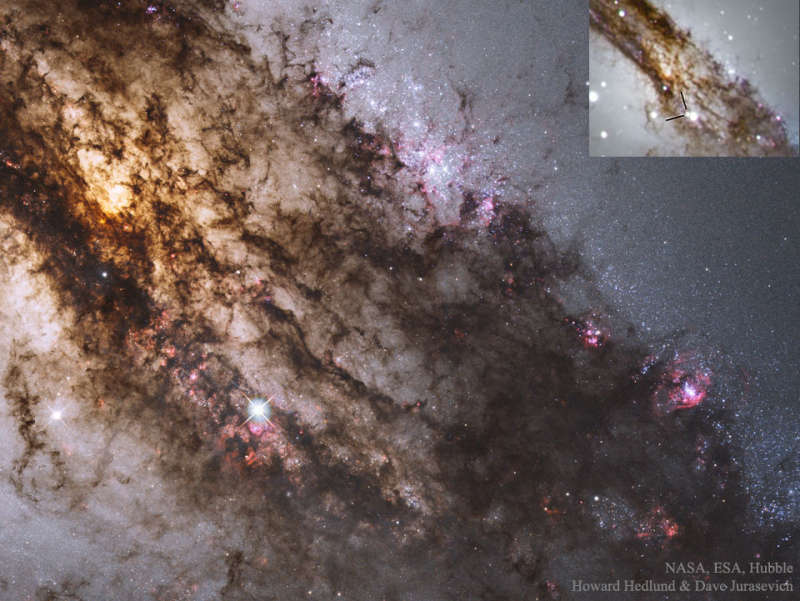Credit & Copyright: NASA,
ESA, and the
Hubble Heritage
(STScI/AURA);
Inset Image: Howard Hedlund & Dave Jurasevich, Las Campanas Obs.
Explanation:
Telescopes around the world are tracking a bright supernova that occurred in a nearby
dusty galaxy.
The powerful stellar explosion was first noted earlier this month.
The nearby galaxy is the photogenic
Centaurus A,
visible with binoculars and known for impressive filaments of
light-absorbing dust that cross its center.
Cen A is featured here in a
high-resolution
archival
Hubble Space
Telescope
image, with an inset image featuring the
supernova taken from the ground only two days after discovery.
Designated
SN2016adj,
the supernova is highlighted with crosshairs in the inset, appearing just to the
left of a bright foreground star in our
Milky Way
Galaxy.
This supernova is currently thought to be of
Type IIb, a
stellar-core-collapse supernova,
and is of high interest because it occurred
so nearby
and because it is being seen through a known dust filament.
Current and future observations of
this supernova
may give us new clues about the fates of massive stars and how some
elements found on our Earth were formed.
Inset Image: Howard Hedlund & Dave Jurasevich, Las Campanas Obs.
1999 2000 2001 2002 2003 2004 2005 2006 2007 2008 2009 2010 2011 2012 2013 2014 2015 2016 2017 2018 2019 2020 2021 2022 2023 2024 2025 |
Январь Февраль Март Апрель Май Июнь Июль Август Сентябрь Октябрь Ноябрь Декабрь |
NASA Web Site Statements, Warnings, and Disclaimers
NASA Official: Jay Norris. Specific rights apply.
A service of: LHEA at NASA / GSFC
& Michigan Tech. U.
|
Публикации с ключевыми словами:
Centaurus A - supernova - Центавр A - Сверхновые
Публикации со словами: Centaurus A - supernova - Центавр A - Сверхновые | |
См. также:
Все публикации на ту же тему >> | |
